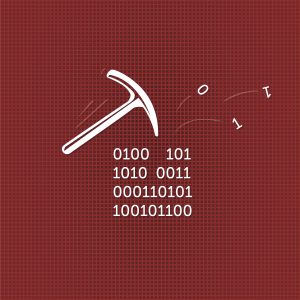Data is the New Bacon
 Over the summer, the literacy researcher Nell Duke tweeted that she saw a shirt that said “Data is the new bacon.”
Over the summer, the literacy researcher Nell Duke tweeted that she saw a shirt that said “Data is the new bacon.”
Both she and I are vegetarians, but I can understand the sentiment. In the education world, data is king–for better or worse. I think this shirt was trying to say that data is everywhere, and everyone loves it (just like bacon). But we should also be careful, because like bacon, too much data can be bad for your health.
In my new role as ELA Curriculum Coordinator for my district, I am responsible for our continuous school/district improvement initiatives, and our multi-tiered systems of support. These two areas, in particular, require data in order to make instructional decisions, progress monitor, and reflect on those decisions.
Why Use a Data Protocol?
In our district, we use a data protocol modeled after Bruce Wellman and Laura Lipton’s book, Got Data? Now What? For those who are unfamiliar with the term, a data protocol is a structured way to look at and talk about data. As such, they help shape our conversations, which in turn helps shape our thinking. A data protocol, in particular, allows us to talk about data in a safe and structured way that brings all voices into the conversation.
When thinking about data, it’s useful to get out of the mindset that data has to be numbers. Data sets can represent anything you want to think deeply about. Take, for example, a new data warehouse that we rolled out at the beginning of the year. This is an online repository for data on student demographics, assessments, behaviors, and so forth; it maintains all the data in one place, and allows various reports to be run from that data.
This warehouse turned out to be a good data set for our teachers. After teachers received training in the data protocol, they used the data warehouse platform itself as a data set to be analyzed.
Intellectual “Hang Time”
 I am an avid practitioner of yoga, and often my yoga teachers will tell the class to stay in the pose, to give it some “hang time” before we move onto the next pose. That’s the hard part, though. When it’s hard and you want to get out, that’s where the work happens. The same is true when talking about data–the power is in our ability to give ourselves intellectual “hang time.”
I am an avid practitioner of yoga, and often my yoga teachers will tell the class to stay in the pose, to give it some “hang time” before we move onto the next pose. That’s the hard part, though. When it’s hard and you want to get out, that’s where the work happens. The same is true when talking about data–the power is in our ability to give ourselves intellectual “hang time.”
A data protocol allows us to do this. It also prevents us from moving too quickly to judgment and action, or from looking at too much data at once (the “too much bacon is detrimental” stuff).
I coach a Formative Assessment for Michigan Educators team in my district, and I recently had the amazing opportunity to attend a workshop facilitated by Bruce Wellman, which was called “Using Data to Mediate Thinking.” Throughout the day, Wellman reiterated that power and deep understanding emerge only when we’ve allowed ourselves the time to observe the data without evaluation and just be uncertain, because “uncertainty is the foundation of inquiry and research.”
The Three Phases
Wellman and Lipton’s data protocol is broken into three phases:
- Activating and Engaging. This is where participants bring experiences and expectations to the surface and voice predictions and assumptions about the data.
- Exploring and Discovering. This is where groups analyze the data. It is a time for observation without judgment. This is where that intellectual “hang time” really comes into play, as groups must resist the urge to jump to conclusions and try to take action.
- Organizing and Integrating. This is where groups identify areas of concerns, determine causation, and begin developing theories of action.
Like bacon, data is great, but too much of it or rushing through it can be a problem and won’t yield the solutions we need to improve teaching and learning. Allowing ourselves a dedicated time and way of talking about data can help us resist those tendencies.
 Jianna Taylor (@JiannaTaylor) is the ELA Curriculum Coordinator for the West Bloomfield School District. Prior to this role, she was a middle school ELA and Title 1 teacher. She is a MiELA Network Summer Institute facilitator and is an Oakland Writing Project Teacher Leader. Jianna earned her bachelor’s degree from Oakland University and her master’s degree from the University of Michigan. She also writes reviews of children’s books and young adult novels for the magazine School Library Connection.
Jianna Taylor (@JiannaTaylor) is the ELA Curriculum Coordinator for the West Bloomfield School District. Prior to this role, she was a middle school ELA and Title 1 teacher. She is a MiELA Network Summer Institute facilitator and is an Oakland Writing Project Teacher Leader. Jianna earned her bachelor’s degree from Oakland University and her master’s degree from the University of Michigan. She also writes reviews of children’s books and young adult novels for the magazine School Library Connection.
